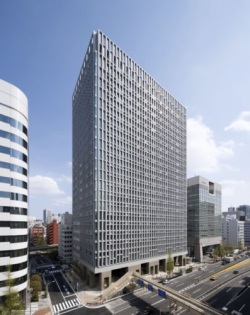
by Shane Henson — August 8, 2012—Japan is now home to a building that reportedly emits the world’s least amount of carbon dioxide (CO2). The state-of-the-art, highly sustainable building was built by Shimizu Corporation, a large Japanese contractor with a history that dates back to more than 200 years, and will serve as the company’s new headquarters, located in Tokyo.
According to Shimizu, the building emits only 38 kg/m2 of CO2 per year, 62% less on average than ordinary buildings in Tokyo. Since Japan has few natural resources such as oil or gas and has faced energy crises twice before, buildings there are designed to conserve energy. This is sure to increase the demand for construction of buildings like the new Shimizu headquarters, the company says.
Shimizu has developed and adopted various technologies to reduce CO2 emissions, it says. One representative technology is an air-conditioning system that makes use of radiant heat. Water hoses run under ceiling boards like capillary vessels. By controlling the temperature of the water circulating in the hoses, the temperature of the ceiling board surface is controlled. As a result, a surface temperature of about 20 degrees absorbs the heat of people working in the office through a radiant effect. This system can reportedly reduce CO2 emissions by 30% compared with conventional air conditioning systems.
The lighting system also makes use of energy-efficient technology. Light-emitting diode lighting is fully adopted and controlled by motion sensors. Energy used for lighting in the daytime is generated by photovoltaic panels (PV) placed in the outer walls. The area of the PV panels is about 2,000 m2 and generates 84,000 kWh of power per year.
Furthermore, Shimizu has installed window shades that allow sunlight into the offices. The shade angle automatically changes to follow the sun. These efforts make it possible to reduce CO2 emissions by 90% compared with a standard lighting system. Shimizu says that by the end of the year 2015, it will reduce CO2 emissions down to 70% through fine tuning air-conditioning and lighting facilities as well as adopting further energy-saving systems. Finally, Shimizu will offset the remaining emissions by creating emission rights to realize a Zero Emission Building (ZEB).





